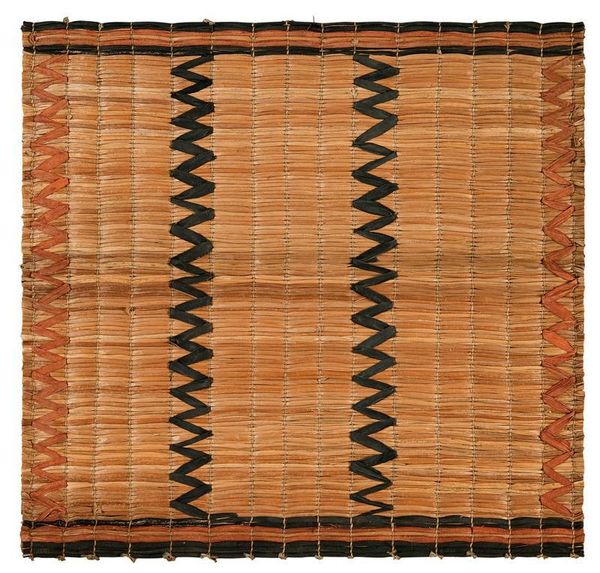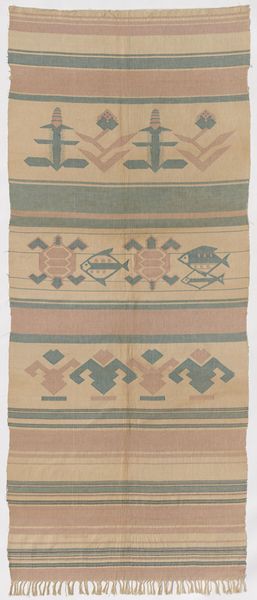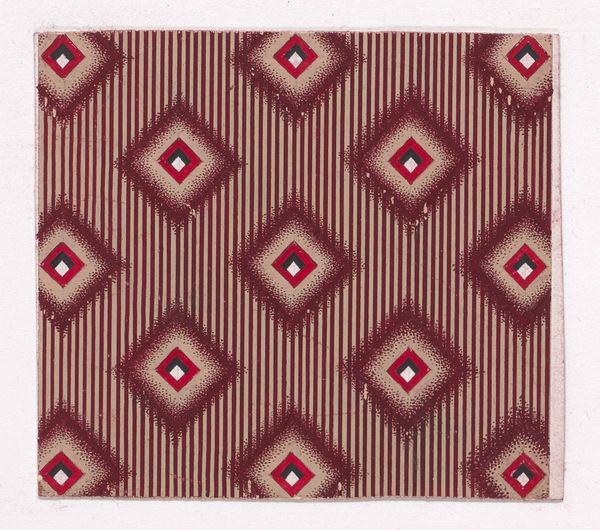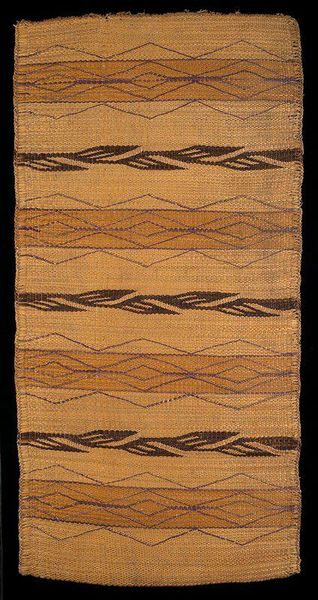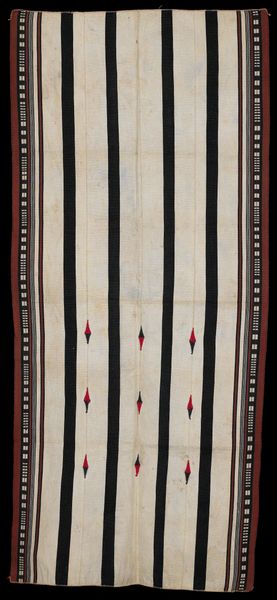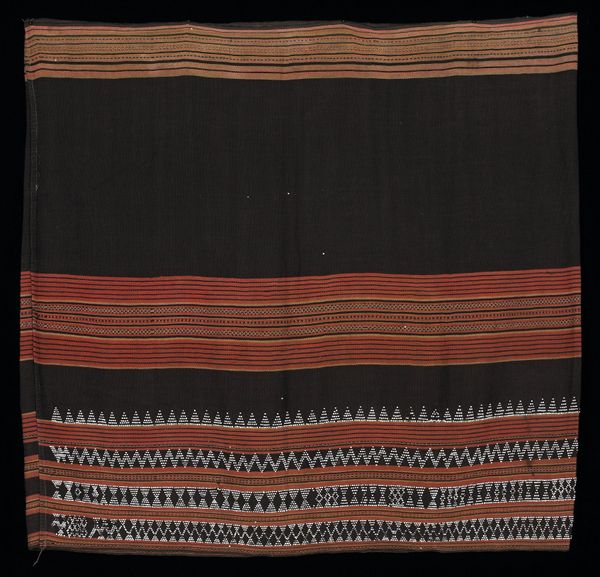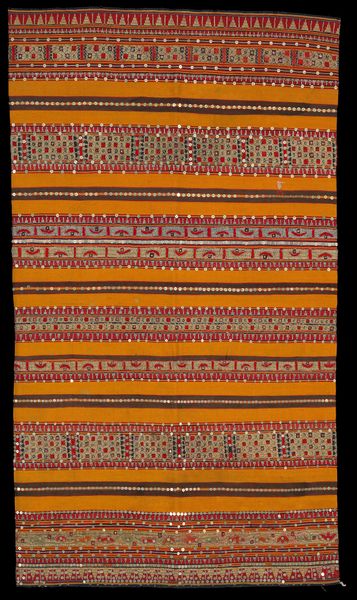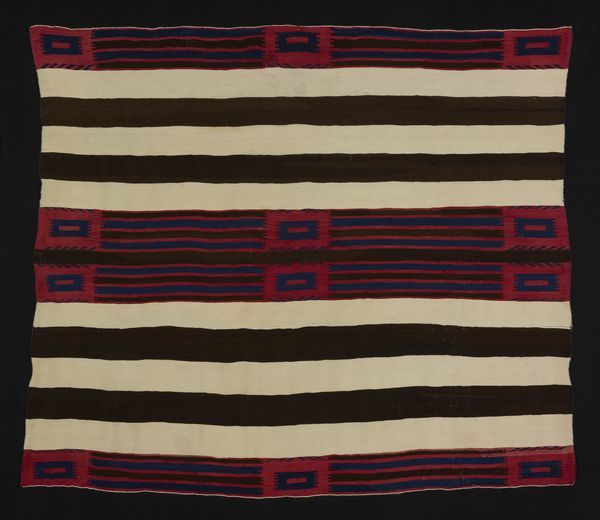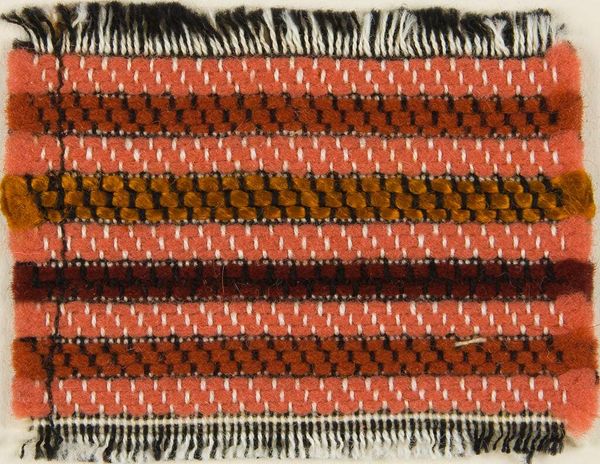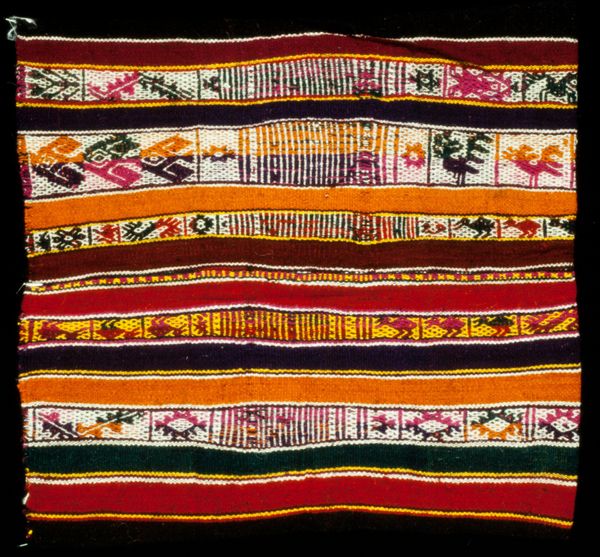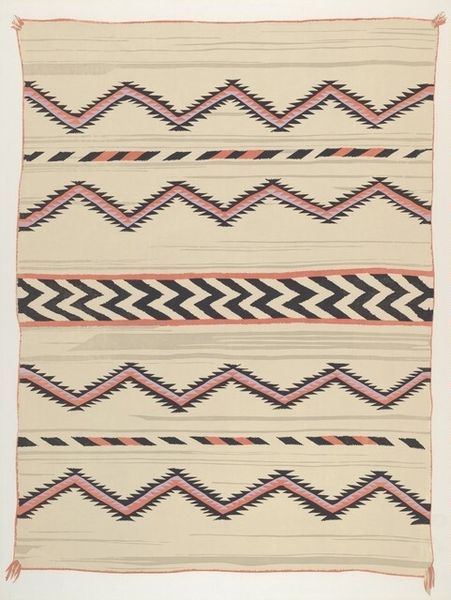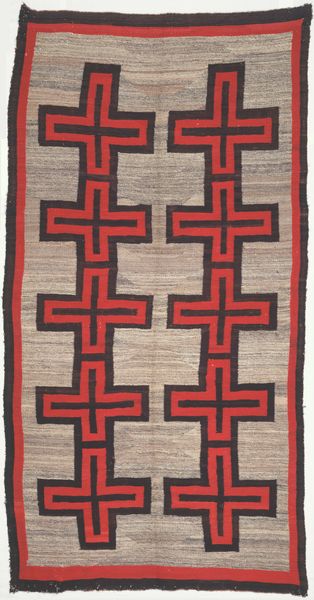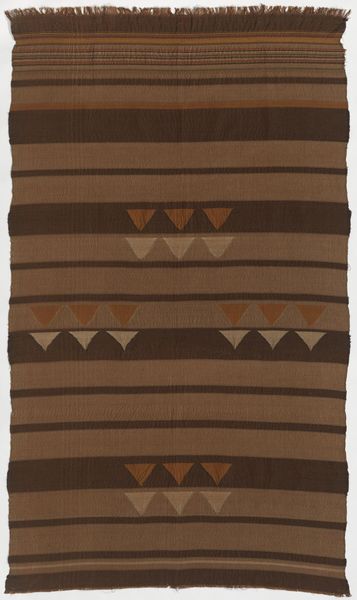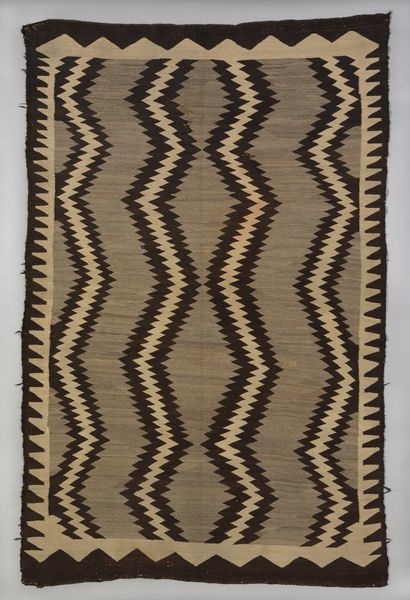
fibre-art, weaving, textile
#
wood texture
#
fibre-art
#
weaving
#
textile
#
geometric pattern
#
organic pattern
#
geometric
#
decorative-art
#
indigenous-americas
Dimensions: 22 1/4 × 21 3/8 in. (56.52 × 54.29 cm)
Copyright: No Known Copyright
Curator: Looking at this piece, I feel this incredibly tactile connection. I want to run my hands across the woven texture. It’s soothing but also sharp, almost prickly. Editor: That’s a wonderful initial impression. We’re looking at what’s titled “Figured Mat (chitarape)", a fibre artwork crafted from weaving, dating back to the late 19th or early 20th century. It’s currently part of the Minneapolis Institute of Art's collection, if anyone is interested in visiting in person. What intrigues me is how the geometric patterns become a form of language here. Curator: I get that feeling of language. The brown and black shapes dancing across the pale background almost read as glyphs or symbolic markers, you know? Each square or line tells a story. Editor: Precisely! Consider that indigenous art traditions often encoded complex narratives and cultural knowledge into these motifs. The act of weaving itself might be seen as a performative gesture of cultural preservation or even resistance against the erasure of indigenous lifeways. The artist may be anonymous but their message is clearly displayed on the mat. Curator: Definitely feels like a kind of defiant beauty, if that makes sense. Like, despite everything, here’s a durable piece of ourselves and of the world around us, shaped from the materials at hand. Did I mention the earthy tones? All those natural shades—like sun-baked earth. Editor: Absolutely. Think about what weaving signifies: interconnectedness, a binding together. I find myself considering what kind of community knowledge or skill-sharing would have been required to create this piece. Was weaving a solitary activity or collective endeavor in this context? And how would this have factored into gender roles? Curator: Such beautiful, heavy questions! I’m walking away with so many thoughts of women’s work, craft, culture. Just wow. Editor: It gives us much to reflect on indeed, including the value and power of textile arts in embodying collective histories and identities.
Comments
minneapolisinstituteofart almost 2 years ago
⋮
Mats made from cattail, a wetland plant with a thick, flowering spike, were used for several purposes. Hung on the wall, they formed a barrier to help insulate the house. During ceremonies, they were placed on the floor for sitting.
Join the conversation
Join millions of artists and users on Artera today and experience the ultimate creative platform.
